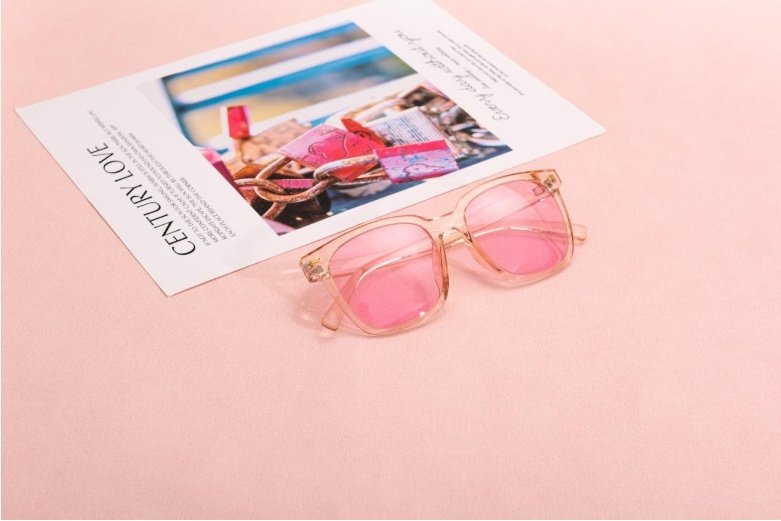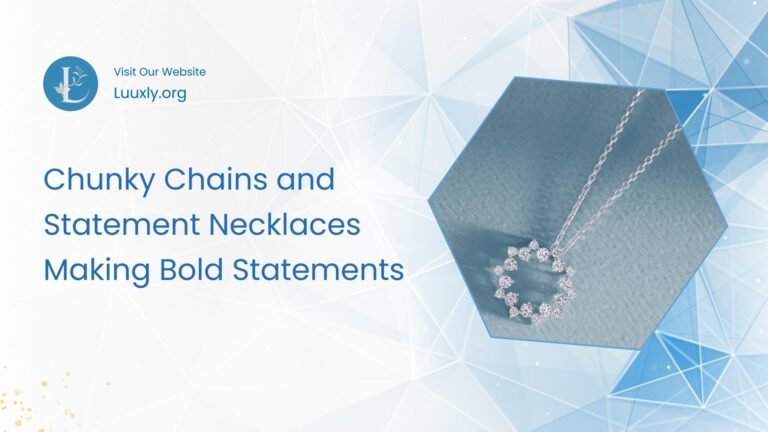[{"id":3372,"link":"https:\/\/luuxly.org\/brandy-and-billy-onlyfans\/","name":"brandy-and-billy-onlyfans","thumbnail":{"url":"https:\/\/luuxly.org\/wp-content\/uploads\/2025\/12\/Brandy-and-Billy-OnlyFans.jpg","alt":""},"title":"Exploring Brandy and Billy's OnlyFans Fame: Content, Controversies, and Future","author":{"name":"Liliana Everly","link":"https:\/\/luuxly.org\/author\/liliana-everly\/"},"date":"Dec 3, 2025","dateGMT":"2025-12-03 12:35:31","modifiedDate":"2025-12-03 12:41:52","modifiedDateGMT":"2025-12-03 12:41:52","commentCount":"0","commentStatus":"closed","categories":{"coma":"<a href=\"https:\/\/luuxly.org\/celebrity\/\" rel=\"category tag\">Celebrity<\/a>, <a href=\"https:\/\/luuxly.org\/celebrity\/net-worth\/\" rel=\"category tag\">Net Worth<\/a>","space":"<a href=\"https:\/\/luuxly.org\/celebrity\/\" rel=\"category tag\">Celebrity<\/a> <a href=\"https:\/\/luuxly.org\/celebrity\/net-worth\/\" rel=\"category tag\">Net Worth<\/a>"},"taxonomies":{"post_tag":""},"readTime":{"min":8,"sec":50},"status":"publish","excerpt":""},{"id":3367,"link":"https:\/\/luuxly.org\/brandy-and-billy-net-worth\/","name":"brandy-and-billy-net-worth","thumbnail":{"url":"https:\/\/luuxly.org\/wp-content\/uploads\/2025\/12\/Brandy-and-Billy-Net-Worth.jpg","alt":""},"title":"Brandy and Billy Net Worth: A Love Story of Wealth and Success","author":{"name":"Liliana Everly","link":"https:\/\/luuxly.org\/author\/liliana-everly\/"},"date":"Dec 3, 2025","dateGMT":"2025-12-03 12:09:04","modifiedDate":"2025-12-03 12:25:19","modifiedDateGMT":"2025-12-03 12:25:19","commentCount":"0","commentStatus":"closed","categories":{"coma":"<a href=\"https:\/\/luuxly.org\/celebrity\/\" rel=\"category tag\">Celebrity<\/a>, <a href=\"https:\/\/luuxly.org\/celebrity\/net-worth\/\" rel=\"category tag\">Net Worth<\/a>","space":"<a href=\"https:\/\/luuxly.org\/celebrity\/\" rel=\"category tag\">Celebrity<\/a> <a href=\"https:\/\/luuxly.org\/celebrity\/net-worth\/\" rel=\"category tag\">Net Worth<\/a>"},"taxonomies":{"post_tag":""},"readTime":{"min":8,"sec":5},"status":"publish","excerpt":""},{"id":3364,"link":"https:\/\/luuxly.org\/maximizing-profitability-through-digital-data-integration-and-operational-efficiency-in-modern-retail\/","name":"maximizing-profitability-through-digital-data-integration-and-operational-efficiency-in-modern-retail","thumbnail":{"url":"https:\/\/luuxly.org\/wp-content\/uploads\/2025\/12\/image_692f0ac4b810e.jpeg","alt":"retail competitive intelligence"},"title":"Maximizing Profitability Through Digital Data Integration and Operational Efficiency in Modern Retail","author":{"name":"Liliana Everly","link":"https:\/\/luuxly.org\/author\/liliana-everly\/"},"date":"Dec 2, 2025","dateGMT":"2025-12-02 17:59:03","modifiedDate":"2025-12-02 17:59:06","modifiedDateGMT":"2025-12-02 17:59:06","commentCount":"0","commentStatus":"closed","categories":{"coma":"<a href=\"https:\/\/luuxly.org\/general\/\" rel=\"category tag\">General<\/a>","space":"<a href=\"https:\/\/luuxly.org\/general\/\" rel=\"category tag\">General<\/a>"},"taxonomies":{"post_tag":""},"readTime":{"min":5,"sec":20},"status":"publish","excerpt":""},{"id":3361,"link":"https:\/\/luuxly.org\/the-future-of-medical-data-accuracy-and-coding-precision-in-modern-healthcare\/","name":"the-future-of-medical-data-accuracy-and-coding-precision-in-modern-healthcare","thumbnail":{"url":"https:\/\/luuxly.org\/wp-content\/uploads\/2025\/12\/image_692f09f334b97.jpeg","alt":"medical image annotation"},"title":"The Future of Medical Data Accuracy and Coding Precision in Modern Healthcare","author":{"name":"Liliana Everly","link":"https:\/\/luuxly.org\/author\/liliana-everly\/"},"date":"Dec 2, 2025","dateGMT":"2025-12-02 17:56:49","modifiedDate":"2025-12-02 17:56:52","modifiedDateGMT":"2025-12-02 17:56:52","commentCount":"0","commentStatus":"closed","categories":{"coma":"<a href=\"https:\/\/luuxly.org\/health\/\" rel=\"category tag\">Health<\/a>","space":"<a href=\"https:\/\/luuxly.org\/health\/\" rel=\"category tag\">Health<\/a>"},"taxonomies":{"post_tag":""},"readTime":{"min":5,"sec":19},"status":"publish","excerpt":""},{"id":3358,"link":"https:\/\/luuxly.org\/essential-construction-safety-practices-every-site-should-follow\/","name":"essential-construction-safety-practices-every-site-should-follow","thumbnail":{"url":"https:\/\/luuxly.org\/wp-content\/uploads\/2025\/12\/image_692f0ac4a3aaf.jpeg","alt":"miami construction company"},"title":"Essential Construction Safety Practices Every Site Should Follow","author":{"name":"Liliana Everly","link":"https:\/\/luuxly.org\/author\/liliana-everly\/"},"date":"Dec 2, 2025","dateGMT":"2025-12-02 17:54:48","modifiedDate":"2025-12-02 17:54:50","modifiedDateGMT":"2025-12-02 17:54:50","commentCount":"0","commentStatus":"closed","categories":{"coma":"<a href=\"https:\/\/luuxly.org\/general\/\" rel=\"category tag\">General<\/a>","space":"<a href=\"https:\/\/luuxly.org\/general\/\" rel=\"category tag\">General<\/a>"},"taxonomies":{"post_tag":""},"readTime":{"min":5,"sec":19},"status":"publish","excerpt":""},{"id":3353,"link":"https:\/\/luuxly.org\/exploring-hybrid-strategies-how-a-modern-oil-and-gas-company-can-benefit-from-solar-power\/","name":"exploring-hybrid-strategies-how-a-modern-oil-and-gas-company-can-benefit-from-solar-power","thumbnail":{"url":"https:\/\/luuxly.org\/wp-content\/uploads\/2025\/11\/Pennsylvania-solar-incentives.jpeg","alt":"Pennsylvania solar incentives"},"title":"Exploring Hybrid Strategies: How a Modern Oil and Gas Company Can Benefit From Solar Power","author":{"name":"Liliana Everly","link":"https:\/\/luuxly.org\/author\/liliana-everly\/"},"date":"Nov 26, 2025","dateGMT":"2025-11-26 17:13:53","modifiedDate":"2025-11-26 17:13:56","modifiedDateGMT":"2025-11-26 17:13:56","commentCount":"0","commentStatus":"closed","categories":{"coma":"<a href=\"https:\/\/luuxly.org\/business\/\" rel=\"category tag\">Business<\/a>","space":"<a href=\"https:\/\/luuxly.org\/business\/\" rel=\"category tag\">Business<\/a>"},"taxonomies":{"post_tag":""},"readTime":{"min":4,"sec":54},"status":"publish","excerpt":""},{"id":3350,"link":"https:\/\/luuxly.org\/top-features-to-look-for-when-choosing-a-business-software-and-provider-for-small-business-growth\/","name":"top-features-to-look-for-when-choosing-a-business-software-and-provider-for-small-business-growth","thumbnail":{"url":"https:\/\/luuxly.org\/wp-content\/uploads\/2025\/11\/small-business-PEO-provider.jpeg","alt":"small business PEO provider"},"title":"Top Features to Look for When Choosing a Business Software and Provider for Small Business Growth","author":{"name":"Liliana Everly","link":"https:\/\/luuxly.org\/author\/liliana-everly\/"},"date":"Nov 26, 2025","dateGMT":"2025-11-26 17:10:26","modifiedDate":"2025-11-26 17:10:29","modifiedDateGMT":"2025-11-26 17:10:29","commentCount":"0","commentStatus":"closed","categories":{"coma":"<a href=\"https:\/\/luuxly.org\/business\/\" rel=\"category tag\">Business<\/a>","space":"<a href=\"https:\/\/luuxly.org\/business\/\" rel=\"category tag\">Business<\/a>"},"taxonomies":{"post_tag":""},"readTime":{"min":4,"sec":38},"status":"publish","excerpt":""},{"id":3347,"link":"https:\/\/luuxly.org\/business-consultant-vs-in-house-planning-which-delivers-better-results\/","name":"business-consultant-vs-in-house-planning-which-delivers-better-results","thumbnail":{"url":"https:\/\/luuxly.org\/wp-content\/uploads\/2025\/11\/payroll-solutions.jpeg","alt":""},"title":"Business Consultant vs. In-House Planning: Which Delivers Better Results?","author":{"name":"Liliana Everly","link":"https:\/\/luuxly.org\/author\/liliana-everly\/"},"date":"Nov 26, 2025","dateGMT":"2025-11-26 17:07:14","modifiedDate":"2025-11-26 17:07:18","modifiedDateGMT":"2025-11-26 17:07:18","commentCount":"0","commentStatus":"closed","categories":{"coma":"<a href=\"https:\/\/luuxly.org\/business\/\" rel=\"category tag\">Business<\/a>","space":"<a href=\"https:\/\/luuxly.org\/business\/\" rel=\"category tag\">Business<\/a>"},"taxonomies":{"post_tag":""},"readTime":{"min":4,"sec":45},"status":"publish","excerpt":""},{"id":3337,"link":"https:\/\/luuxly.org\/how-to-choose-the-best-animal-feed-and-equipment-supplier-for-your-farms-success\/","name":"how-to-choose-the-best-animal-feed-and-equipment-supplier-for-your-farms-success","thumbnail":{"url":"https:\/\/luuxly.org\/wp-content\/uploads\/2025\/11\/animal-feed-supplier.jpeg","alt":""},"title":"How to Choose the Best Animal Feed and Equipment Supplier for Your Farm\u2019s Success","author":{"name":"Liliana Everly","link":"https:\/\/luuxly.org\/author\/liliana-everly\/"},"date":"Nov 25, 2025","dateGMT":"2025-11-25 16:59:26","modifiedDate":"2025-11-25 16:59:29","modifiedDateGMT":"2025-11-25 16:59:29","commentCount":"0","commentStatus":"closed","categories":{"coma":"<a href=\"https:\/\/luuxly.org\/health\/\" rel=\"category tag\">Health<\/a>","space":"<a href=\"https:\/\/luuxly.org\/health\/\" rel=\"category tag\">Health<\/a>"},"taxonomies":{"post_tag":""},"readTime":{"min":4,"sec":37},"status":"publish","excerpt":""},{"id":3333,"link":"https:\/\/luuxly.org\/mens-apparel-style-guide-best-pairing-tips-to-elevate-your-jeans-outfit\/","name":"mens-apparel-style-guide-best-pairing-tips-to-elevate-your-jeans-outfit","thumbnail":{"url":"https:\/\/luuxly.org\/wp-content\/uploads\/2025\/11\/west-coast-mens-jeans.jpeg","alt":"west coast men's jeans"},"title":"Men\u2019s Apparel Style Guide: Best Pairing Tips to Elevate Your Jeans Outfit","author":{"name":"Liliana Everly","link":"https:\/\/luuxly.org\/author\/liliana-everly\/"},"date":"Nov 25, 2025","dateGMT":"2025-11-25 16:55:50","modifiedDate":"2025-11-25 16:55:53","modifiedDateGMT":"2025-11-25 16:55:53","commentCount":"0","commentStatus":"closed","categories":{"coma":"<a href=\"https:\/\/luuxly.org\/fashion\/\" rel=\"category tag\">Fashion<\/a>","space":"<a href=\"https:\/\/luuxly.org\/fashion\/\" rel=\"category tag\">Fashion<\/a>"},"taxonomies":{"post_tag":""},"readTime":{"min":4,"sec":39},"status":"publish","excerpt":""},{"id":3330,"link":"https:\/\/luuxly.org\/thoughtful-gifts-for-women-how-to-choose-presents-that-show-you-care\/","name":"thoughtful-gifts-for-women-how-to-choose-presents-that-show-you-care","thumbnail":{"url":"https:\/\/luuxly.org\/wp-content\/uploads\/2025\/11\/coffee-pods-online.jpeg","alt":""},"title":"Thoughtful Gifts for Women: How to Choose Presents That Show You Care","author":{"name":"Liliana Everly","link":"https:\/\/luuxly.org\/author\/liliana-everly\/"},"date":"Nov 25, 2025","dateGMT":"2025-11-25 16:53:29","modifiedDate":"2025-11-25 16:53:32","modifiedDateGMT":"2025-11-25 16:53:32","commentCount":"0","commentStatus":"closed","categories":{"coma":"<a href=\"https:\/\/luuxly.org\/health\/\" rel=\"category tag\">Health<\/a>","space":"<a href=\"https:\/\/luuxly.org\/health\/\" rel=\"category tag\">Health<\/a>"},"taxonomies":{"post_tag":""},"readTime":{"min":4,"sec":36},"status":"publish","excerpt":""},{"id":3327,"link":"https:\/\/luuxly.org\/why-natural-supplements-like-zeaxanthin-and-thai-ginger-are-transforming-modern-wellness\/","name":"why-natural-supplements-like-zeaxanthin-and-thai-ginger-are-transforming-modern-wellness","thumbnail":{"url":"https:\/\/luuxly.org\/wp-content\/uploads\/2025\/11\/zeaxanthin-foods.jpeg","alt":"zeaxanthin foods"},"title":"Why Natural Supplements Like Zeaxanthin and Thai Ginger Are Transforming Modern Wellness","author":{"name":"Liliana Everly","link":"https:\/\/luuxly.org\/author\/liliana-everly\/"},"date":"Nov 25, 2025","dateGMT":"2025-11-25 16:50:01","modifiedDate":"2025-11-25 17:01:10","modifiedDateGMT":"2025-11-25 17:01:10","commentCount":"0","commentStatus":"closed","categories":{"coma":"<a href=\"https:\/\/luuxly.org\/health\/\" rel=\"category tag\">Health<\/a>","space":"<a href=\"https:\/\/luuxly.org\/health\/\" rel=\"category tag\">Health<\/a>"},"taxonomies":{"post_tag":""},"readTime":{"min":4,"sec":35},"status":"publish","excerpt":""}]




